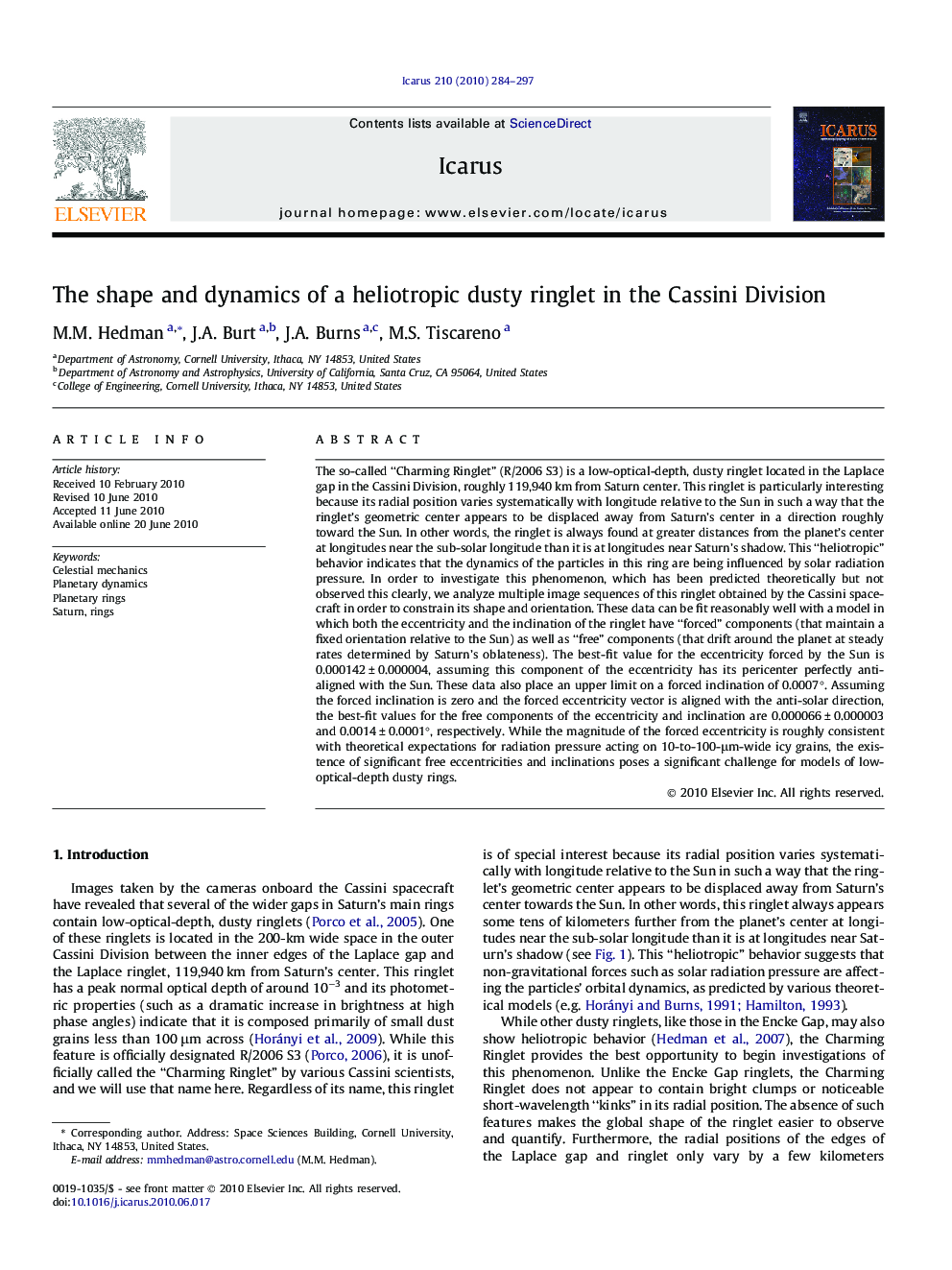| Article ID | Journal | Published Year | Pages | File Type |
|---|---|---|---|---|
| 1774159 | Icarus | 2010 | 14 Pages |
The so-called “Charming Ringlet” (R/2006 S3) is a low-optical-depth, dusty ringlet located in the Laplace gap in the Cassini Division, roughly 119,940 km from Saturn center. This ringlet is particularly interesting because its radial position varies systematically with longitude relative to the Sun in such a way that the ringlet’s geometric center appears to be displaced away from Saturn’s center in a direction roughly toward the Sun. In other words, the ringlet is always found at greater distances from the planet’s center at longitudes near the sub-solar longitude than it is at longitudes near Saturn’s shadow. This “heliotropic” behavior indicates that the dynamics of the particles in this ring are being influenced by solar radiation pressure. In order to investigate this phenomenon, which has been predicted theoretically but not observed this clearly, we analyze multiple image sequences of this ringlet obtained by the Cassini spacecraft in order to constrain its shape and orientation. These data can be fit reasonably well with a model in which both the eccentricity and the inclination of the ringlet have “forced” components (that maintain a fixed orientation relative to the Sun) as well as “free” components (that drift around the planet at steady rates determined by Saturn’s oblateness). The best-fit value for the eccentricity forced by the Sun is 0.000142 ± 0.000004, assuming this component of the eccentricity has its pericenter perfectly anti-aligned with the Sun. These data also place an upper limit on a forced inclination of 0.0007°. Assuming the forced inclination is zero and the forced eccentricity vector is aligned with the anti-solar direction, the best-fit values for the free components of the eccentricity and inclination are 0.000066 ± 0.000003 and 0.0014 ± 0.0001°, respectively. While the magnitude of the forced eccentricity is roughly consistent with theoretical expectations for radiation pressure acting on 10-to-100-μm-wide icy grains, the existence of significant free eccentricities and inclinations poses a significant challenge for models of low-optical-depth dusty rings.
